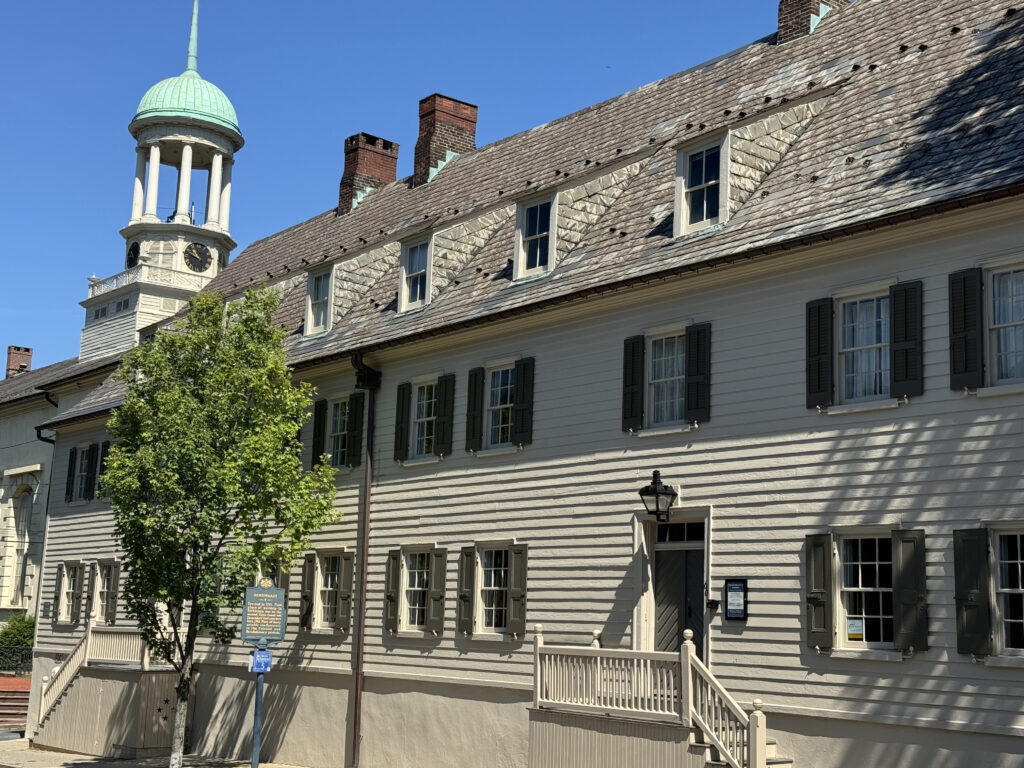
By Rev. Janel Rice
Senior Pastor, Central Moravian Church
Published Sept. 7, 2024 in The Morning Call
In the mid-1700s a Welsh woman named Mary Penry was accepted into the Moravian Community of Bethlehem, and more specifically as a member of the Single Sisters’ House, a building still present on historic Bethlehem’s Church Street today. It appears that Mary wasn’t looking to be married, unlike many of the single sisters who only stayed a short time in this section of the 18th-century Moravian community before joining the married people. Yet it also appeared that she didn’t want to live alone. In her letters, which have been collected and edited by Lehigh University’s Scott Paul Gordon in his book “The Letters of Mary Penry,” we have a lens not only to see into the 18th-century Moravian Church as an institution, but also what the community was about and how it sustained married and single people alike.
Numerous religious scholars have questioned the viability of the 21st-century Christian faith if it is only connected to static institutions: the church buildings and statements of belief or creeds that once seemed so essential. Brian McLaren, in his book “The Great Spiritual Migration” writes of the rising importance for people to see faith as a community builder for the common good, moving us from an “organized religion” to an “organizing religion.”
While McLaren’s thoughts are coming from a book written just a few years ago, it is inspiring to be a part of Mary Penry’s organizing religion of the 1700s. Make no mistake, we are not called to live in a fantasy of a glorified religious past, and the 18th-century Moravian Church is not the faith that will guide us in the 21st century. But understanding the 18th-century Moravians’ organizing religion, set around the practice of building community and seeking the common good as evidenced in the community structures they first built in colonial Bethlehem should be lifted up today as a model of living God’s love as a faith practice.
In late July, five institutions in Historic Bethlehem: Bethlehem Area Moravians, Central Moravian Church, Historic Bethlehem Museums & Sites, Moravian University, and the city government celebrated a long-awaited decision as we were recognized as a World Heritage site Moravian Church Settlements, Bethlehem. Check out moravianchurchsettlements.org to learn more about what this means and the background behind UNESCO World Heritage sites.
One of the aspects that makes this designation unique is that it is a transnational recognition; meaning that we share the designation with Moravian Church Settlements in Gracehill, Northern Ireland, Herrnhut, Germany, and Christiansfeld, Denmark.
Another thing that makes this designation unique is the recognition of the Moravian faith communities’ ongoing and sustained efforts toward community building.
We all have the opportunity to be a part of not only an organized religion but an organizing religion or an organizing faith practice — one that orients us toward the maintenance of institutions but that also centers us in sustaining each other and caring for each other as members of the human community. I believe that Mary Penry found this in the 18th-century Moravian Single Sisters’ House.
What is the 21st-century version of building a sustainable community, centering ourselves in the questions the care and nurturing the common good? Is it bringing awareness to the centrality of not only our physical health but also our mental health as a spiritual practice? Is it facing the challenging questions of past practices and the urgency of seeking racial justice today? Is it admitting where we have valued institutions and traditions over the common good and the ways we treat other — remembering the Apostle Paul’s warning, if we do not live or practice with love, we do nothing?
But rather than abandoning historic buildings or centuries-old traditions as relics of the past, can we ask ourselves how have they created and are creating opportunities — some old and some new — to build a sustainable community for all our neighbors in the 21st century? Can we move from organized religions to organizing religions that value relevant and loving community-building today?